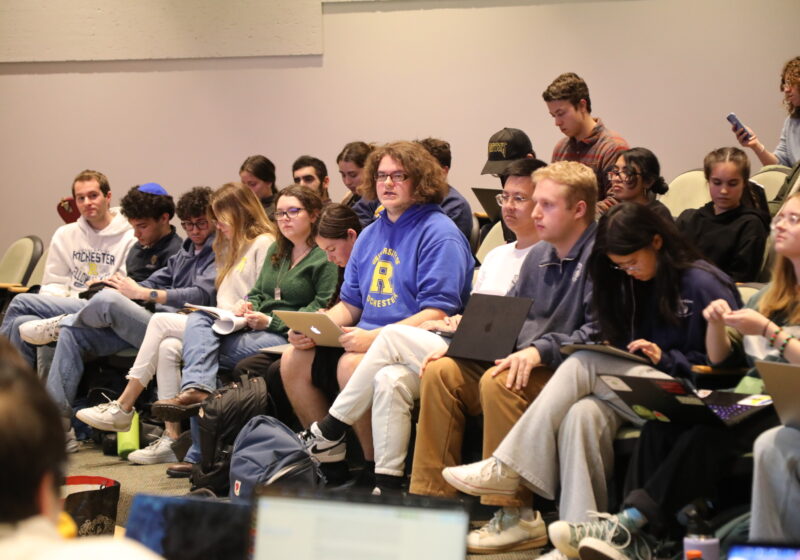It is less than a month into the college basketball season and already we have seen the No. 2, 3, 4, 6, 10 and 16 ranked teams all fall to unranked opponents.
Perennial powerhouses like the North Carolina Tar Heels, Indiana Hoosiers and UCLA Bruins have each suffered defeat not once, but twice to unheralded challengers ? UNC to Hampton and Davidson, Indiana University to Southern Illinois and Marquette and UCLA to Ball State and Pepperdine.
Even the mighty Duke Blue Devils were nearly bit by the upset bug, eking out a one-point win against unranked Seton Hall in its season opener.
In past years, these upsets may have been quickly ignored and considered flukes. But now more than ever it is important not to mistake them for lucky wins, and to understand that there actually is a method to the madness.
Known as mid-major schools, low profile teams such as Ball State, Western Kentucky and Kent State almost have a hidden advantage in games against top-tier programs.
It is not uncommon for a top-rated team to overlook their unranked foe, allowing for the unknown counterpart to take their big-time opponent by surprise.
Smaller schools often schedule ? usually early in the year ? no more than one or two games against high profile teams, allowing for the coaches and players to direct their full pre-season attention to those matchups.
Powerhouses like North Carolina, Kentucky and Kansas play incredibly tough schedules, and often overlook games against mid-majors, seeing them as easy wins in preparation for their rigorous conference play to come.
Smaller schools also have the luxury of keeping players for all four years of their eligibility. Athletes from mid-major schools are generally not ready to make the early leap to the NBA, allowing them the opportunity to learn and grow within the team’s system.
Bigger schools that recruit blue-chip prospects often lose them to the NBA Draft after one or two years, before they can make a long-term impact on the program.
In many ways, a solid four-year player can be more valuable to the year-in, year-out success of a school than a superstar who bolts after his freshman season.
With so many young stars leaving college early, or not going to college at all, the pool of talent in NCAA basketball is diluted.
There are few true superstars left in college basketball, and as a result teams are more evenly matched.
So, what is the key to being successful, and ultimately staying alive in the NCAA Tournament long enough to win it all?
Experience, team play and hitting a “hot streak” at just the right time are all crucial elements in the formula for a run at the national title.
Just last year, the Maryland Terrapins went through a down period before making their way to their first Final Four in school history.
The Terps lost five of six conference games late in the season, and hit rock bottom after suffering an embarrassing home loss to pathetic Florida State.
But just as everyone began to count out the Terps, they went on to win ten of their next eleven games, including seven over ranked opponents.
The Terps who understood Coach Gary Williams’ team concept were loaded with resilient, veteran talent. They knew they could bounce back, go on a run, and succeed in the Tournament.
Conversely, North Carolina experienced the opposite effect last season. After starting the year 21-2, and ranked first in the nation for over a month, the Tar Heels played .500 basketball the rest of the way, and were bounced in the second round of the NCAA Tournament by unranked, seventh seed Penn State. They never found a way to get “hot.”
By the time new coach Matt Doherty’s post-season strategies were in place, his players were already making other plans for Spring Break.
A quick glance around the country reveals that no team fits the championship mold better than Duke.
With the best young talent, Chris Duhon and Daniel Ewing, the best experience, seniors Carlos Boozer and Dahntay Jones and junior Mike Dunleavy, and arguably the country’s top player and head coach, point guard Jason Williams and Mike Krzyzewski, respectively. They appear to be head and shoulders above most of the competition.
The defending national champions have been there before, and have the passion, ability and court savvy to get there again. And hitting winning streaks at the “right time” is a part of the Duke legend.
But come tournament time, when the bands start to play, and the adrenaline start to rush, anything can happen.
Maybe this is the year that a mid-major makes its run at the title ? who knows?
And that is the true beauty of pre-March Madness.
Gerton can be reached at mgerton@campustimes.org.




